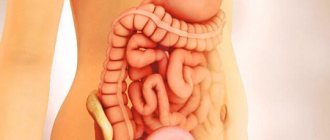For a successful onset and then a smooth course of pregnancy, a woman should visit her gynecologist in advance, undergo a comprehensive examination of her body, and take the necessary tests. One of the important organs, the work of which directly affects a woman’s fertility, is the thyroid gland.
Unfortunately, many doctors do not pay due attention to the study of the functioning of this gland. It is completely in vain, because it is known that the hormones secreted by the thyroid gland affect the speed of all metabolic processes in our body, and in their structure are akin to female sex hormones. For this reason, when the level of thyroid hormones increases or decreases, changes are observed in the female body that are similar to the signs of other diseases. If the thyroid gland malfunctions, engorgement and a feeling of heaviness in the mammary glands may appear, menstruation becomes irregular, etc. These symptoms occur in a number of gynecological diseases, which leads doctors astray from the diagnostic search. It is a mistake to believe that one ultrasound scan (ultrasound) of the thyroid gland is enough, because There are cases in which ultrasound parameters of an organ are normal, but hormonal function is disrupted.
What is T4?
Thyroxine is the main form of biologically active thyroid hormones. It is a prohormone - it produces T3 (triiodothyronine). In the blood it exists in two forms:
- Free T4 . Constitutes 0.4% of the total amount of thyroxine. It is not associated with transport proteins and can move independently in the blood. It has biological activity - it affects the processes occurring in the body. Present in the blood for a short time. Destroyed when passing through the kidneys and liver. Converts to T3.
- Bound T4 . Makes up the majority of total thyroxine. Associated with transport proteins and unable to move independently. It exists in the blood for a long time and is not destroyed in the liver and kidneys. Biologically inactive - does not affect processes occurring in the body. Converts to free T4 when needed.
Thyroxine is synthesized by the follicular cells of the thyroid gland. It is produced under the control of thyroid-stimulating hormone (TSH) in the pituitary gland. In the body it performs the following tasks:
- activates metabolism;
- increases body temperature;
- controls cell growth;
- affects the functioning of the heart;
- stimulates protein production;
- affects the synthesis of vitamins, etc.
In the female body, thyroxine ensures complete ovulation and affects the preparation of the uterus for a possible pregnancy. An imbalance of thyroid hormones leads to infertility.
What is the norm of free thyroxine (st4) in women?
Thyroid amino acid hormone T4 is one of the most important hormones produced by the thyroid gland. Its purpose is to stimulate protein synthesis and regulate metabolism.
T4 hormone also :
- regulates the breakdown of fat and inhibits the process of its deposition in the body; — normalizes the metabolic process in bone tissue; — stimulates motor and mental activity; - prevents an increase in excess cholesterol levels in the blood; - influence the synthesis of vitamins A, which occurs in the liver and is responsible for the normal development of the human skeleton, vision (especially night vision), growth; - support normal functioning of the heart muscle...
In addition, the T4 hormone plays a crucial role in the development of the newborn’s nervous system - from the moment of its birth to 28 days, due to the fact that thyroid hormones are the only substances in our body that produce such an essential element as iodine.
A woman’s ability to conceive directly depends on the amount of thyroid amino acid hormone T4 . Exceeding the T4 norm, as well as its lack, negatively affects the reproductive system.
Free and total thyroxine - what is the difference?
Total thyroxine is an indicator that reflects the concentration of all T4 hormones produced by our thyroid gland. Most of these hormones are inactive and circulate in our blood bound by carrier proteins. Free thyroxine is only part of the total thyroxine , but it is these free hormones that are active.
The amount of total thyroxine in the body can vary greatly under the influence of various factors: pregnancy, menopause, various diseases, taking medications. But the level of free T4 does not change much and should remain practically unchanged. It is the main indicator of the clinical state of a person’s hormonal-thyroid status.
The norm of free thyroxine in women
During pregnancy, the norm of free thyroxine (fT4) in women is 120-140 nanomoles per liter, in the normal state - from 100 to 120 nanomoles per liter. These indicators decrease after the onset of menopause - during this period the norm is 80-100 nanomoles per liter.
Newly born children have significantly higher levels of thyroxine than their parents. decrease over time . Moreover, in healthy women, the content of thyroxine in the blood is initially lower than in men. Its concentration also increases during pregnancy , reaching its maximum in the third prenatal trimester (but in the first, in about 18% of women it drops to the lowest normal limits!).
In addition, the thyroxine content increases depending on the time of year and the time of day.
T4 reaches its maximum - from 8 am to 12 noon.
Minimum : - from the second half of May to the end of August; - one hour before midnight and until 3.00.
If there is a malfunction in the body’s functioning, the levels of this hormone change. Minor changes are possible even with the banal use of medications, and this is not a reason to ring the alarm bell and take emergency measures. But if the changes do not stabilize or occur too abruptly, and even for no apparent reason, such a signal cannot be ignored - the body needs emergency help .
Decrease in T4 - possible causes
A decrease in the concentration of free thyroxine can be caused by:
- diet. Especially protein for dramatic weight loss; - iodine deficiency;
How does T4 change during pregnancy?
During gestation, a healthy thyroid gland increases hormone production by 15-30%. This is necessary for the full development of the fetus and a successful pregnancy. Stimulation of the thyroid gland is associated with the following processes:
- Production of human chorionic gonadotropin. HCG acts as a weak TSH (it is similar in structure to thyroid-stimulating hormone) and leads to a slight increase in free T4. At the same time, the concentration of thyroid-stimulating hormone in the pituitary gland decreases. These processes occur in the first trimester of pregnancy - from 8 to 14 weeks. Transient hyperthyroidism develops. After two months, hormones return to normal. Hormonal imbalance has virtually no effect on a woman’s condition. In only 2% of expectant mothers, T4 increases significantly, which leads to the development of severe toxicosis with uncontrollable vomiting.
- Increased production of thyroid binding globulin (TBG) in the liver by 2.5 times. This leads to an increase in total T4 and a decrease in its free form - biologically active, affecting metabolism. In approximately 30% of women, the level of free thyroxine remains at the lower limit of normal. A significant decrease in T4 occurs with iodine deficiency. At the same time, an increase in bound thyroxine is observed. It reaches its maximum at 20-24 weeks.
- Deiodination of thyroid hormones in the placenta. At the same time, the need for T4 increases and its synthesis increases.
Maternal thyroxine affects the functioning of the fetal thyroid gland. The laying of the organ occurs in the 4-5th week. Hormone production begins at 6-8 weeks, but only by the end of the first trimester does the fetal thyroid gland gain the ability to accumulate iodine and independently synthesize T4. Complete differentiation of the organ ends at the 16th week. From this moment on, the fetal thyroid gland functions independently.
Until 16-18 weeks of pregnancy, the functioning of the fetal thyroid gland is completely dependent on the level of thyroid hormones of the mother. If hormones remain within normal limits, they practically do not penetrate the placenta. Excess T4 and T3 enter the fetal bloodstream. An imbalance of thyroid hormones is the main cause of impaired psychoneurological development in children.
The activity of the fetal thyroid gland also depends on the intake of iodine. The lack of this element in the mother’s body leads to the development of congenital hypothyroidism and, in the long term, to mental retardation. Hypothyroidism can also be caused by the penetration of antibodies to the thyroid tissue.
Changes in the level of thyroid hormones in a woman and a child occur independently of each other. For example, in the second trimester, the fetal T4 level is higher than the maternal T4.
How does TSH affect conception and pregnancy?
Thyrotropin (thyrotropin) is synthesized by the adenohypophysis, a glandular body in the anterior lobe of the pituitary gland. It regulates the secretory activity of the thyroid gland, which produces two iodine-containing hormones - thyroxine and triiodothyronine. Too much or too little TSH leads to an overactive or underactive thyroid gland.
The cascade of processes that occur in the female body is regulated by T3, T4 and TSH. Normal concentrations of hormones guarantee high fertility - the ability to conceive and bear children. Hormonal imbalance is accompanied by a violation of homeostasis, since thyroid hormones have physiological properties. Target cells sensitive to them are found in most internal organs. If the production of thyrotropin is disrupted, this affects the functioning of the reproductive system.
- maturation of follicles;
- ovulation;
- development of the corpus luteum;
- loosening of the endometrium for embryo implantation;
- successful pregnancy.
For pregnancy to occur, thyrotropin must be normal. If there is a lot or little of it, the secretory activity of the thyroid gland changes. This affects the ability to become pregnant and bear fruit. TSH indirectly affects:
- brain formation;
- skeletal growth;
- formation of the organs of the endocrine system of the unborn child.
A TSH test is prescribed for symptoms of hypo- and hyperthyroidism:
- weight fluctuations;
- chronic fatigue;
- frequent constipation;
- emotional lability;
- irregular menstruation;
- swelling of the face;
- causeless anxiety;
- hand tremors;
- tachycardia;
- insensitivity to low temperatures;
- heart rhythm disturbance;
- hair loss;
- neck deformity;
- hoarseness of voice;
- painful periods;
- protrusion of eyes, etc.
TSH in pregnant women with thyroid pathologies is determined every 3 months. For analysis, patients donate blood from the ulnar vein. Preliminary preparation for the examination eliminates errors in the results:
- Blood is drawn on an empty stomach between 8-00 and 11-00 am. During these hours, the content of thyrotropin in the blood is maximum.
- At least 8 hours must pass between the last meal and the test. Those planning a pregnancy can drink still water without dyes or flavors.
- 2 days before the examination, avoid fried and fatty foods, as they affect the level of thyroid hormones in the blood. It is prohibited to consume alcoholic beverages.
- For 1.5-2 hours before blood sampling, it is advisable to avoid physical activity and avoid stressful situations.
Indications for assessing thyroxine levels
To screen for the condition of the thyroid gland, the concentration of two hormones is assessed - TSH and T4. Thyroxine is always determined in conjunction with thyroid-stimulating hormone. Determining T4 in isolation is meaningless.
Thyroxine determination is carried out in the first trimester of pregnancy. The optimal period for examination is 9 weeks. During this period, it is possible to identify possible disorders and affect the functioning of the thyroid gland. In the II and III trimester, determination of T4 is necessary to monitor the prescribed treatment.
Indications for determining T4:
- severe toxicosis (vomiting of pregnant women);
- threat of miscarriage;
- history of miscarriage and infertility;
- multiple pregnancy;
- thyroid disease in the past;
- fetal malformations;
- delayed fetal development;
- maternal diabetes;
- symptoms of thyroid hormone imbalance.
Many researchers believe that TSH and T4 should be determined in all pregnant women, regardless of the presence of complaints and risk factors.
Normal T4 during pregnancy:
- total T4 – 62-150 nmol/l;
- free T4 – 10-25 pmpol/l.
In the first trimester, the concentration of free T4 can fluctuate between 11-28 pmpol/l. After 14 weeks, with physiological changes, thyroxine levels usually do not go beyond normal limits. A significant decrease or increase in T4 indicates the development of pathology.
Why does TSH concentration change?
Thyroid-stimulating hormone corrects the functioning of the thyroid gland. If its content does not correspond to normal values, this indicates endocrine disorders. Timely detection of pathologies during pregnancy guarantees the birth of a healthy child. Therefore, it is advisable to do the first analysis at 6-8 weeks of gestation.
Demotion
TSH levels drop sharply if the gland secretes too many hormones. Possible reasons for a decrease in thyrotropin during pregnancy include:
Graves' disease (hyperthyroidism) is diagnosed much more often during pregnancy. The disease is characterized by complete suppression of TSH synthesis, which is why patients experience ophthalmopathy, that is, eye damage.
Promotion
High levels of thyrotropin during pregnancy are common. This indicates insufficient production of thyroid-stimulating hormones. Therefore, the pituitary gland begins to synthesize more TSH to increase the secretion of T3 and T4.
An excess of thyrotropin during pregnancy is often associated with:
An increase in TSH in the first trimester of gestation is often a consequence of latent endemic goiter. With the onset of pregnancy, the thyroid gland cannot cope with the production of even more T3 and T4. Therefore, the pituitary gland begins to secrete thyrotropin.
Preparing for the examination
Rules for donating blood:
- The blood test must be taken in the morning on an empty stomach. It is advisable to withstand 8-14 hours of fasting. For toxicosis, diabetes, pathology of the digestive tract and other conditions when fasting is difficult to tolerate or is contraindicated, you can donate blood 4 hours after a light snack.
- During the follow-up examination, you need to donate blood at the same time as the first test.
- Before the examination, you should exclude physical activity and stress.
How to normalize TSH levels in children
The principles of therapy are determined by the reasons for TSH fluctuations. If the root cause cannot be eliminated, hormonal therapy is limited. It aims to restore normal hormone levels in the body.
Hyperthyroidism
To reduce the level of iodine-containing hormones, the following are used:
- radioactive therapy - taking radioactive iodine, which destroys part of the thyroid cells;
- antithyroid drugs (Propylthiouracil, Mercazolil) - block the synthesis of tri- and tetraiodothyronine;
- surgery - removal of part of the thyroid gland, due to which its secretory activity is reduced.
Surgery is performed only in extreme cases. Children under 5 years of age are treated with medications. The duration of therapy depends on the causes of the disease and ranges from 1-2 months to 6-7 years.
Surgery is indicated if there is no effect from drug treatment. In 85% of cases, subtotal thyroidectomy is performed - partial removal of the gland.
Hypothyroidism
If thyrotropin exceeds the norm, measures are taken to increase the secretory activity of the thyroid gland. Children are prescribed hormone replacement therapy with L-thyroxine. If TSH levels do not fall below 40 mU/L, treatment is discontinued at age 3 years. Therapy is resumed if free and total T4 fall below normal. This indicates permanent hypothyroidism.
To avoid TSH deviations from the norm, you need to monitor the child’s nutrition and consumption of iodine-containing products. If there are relatives in the family with congenital endocrine diseases, it is advisable to do neonatal screening immediately after the birth of the child.
Reasons for increased T4
An increase in thyroxine can be caused by the following conditions:
- diseases of the thyroid gland associated with its hyperfunction. T4 increases in various thyroiditis (including autoimmune origin), diffuse toxic goiter;
- tumors of the thyroid gland, pituitary gland (thyrotropinoma) and placenta (choriocarcinoma);
- thyroid hormone resistance syndrome;
- severe kidney disease (nephrotic syndrome);
- chronic liver pathology (including viral hepatitis with transition to cirrhosis);
- endocrine disorders (obesity);
- hereditary diseases associated with impaired synthesis of thyroid hormones;
- irrational use of medications (exceeding the dosage of L-thyroxine for hypothyroidism, excessive intake of heparins for hypercoagulation syndrome in pregnant women, etc.).
An increase in T4 leads to the development of hyperthyroidism and the appearance of characteristic symptoms:
- excitability, nervousness;
- insufficient weight gain (less than 300 g per week);
- excessive sweating;
- increased blood pressure;
- cardiopalmus;
- vomit;
- diarrhea.
Against the background of hyperthyroidism, the likelihood of miscarriage is high. The risk of developing gestosis and other complications increases.
Reasons for deviations
Minor deviations of free T4 from the norm during pregnancy can be absolutely normal and do not pose a threat to the health of the mother and baby. However, most often, insufficient or increased levels of thyroxine in the blood of a pregnant woman are a consequence of impaired functioning of the thyroid gland and mean the presence of some disease.
Increased T4
If the concentration of free thyroxine in the blood significantly exceeds the norm, then the reason for this may be an increased concentration of bilirubin or the presence of a large amount of excess weight. Elevated T4 during pregnancy can occur against the background of the following pathological conditions:
- goiter in toxic form;
- chronic liver and kidney diseases;
- nephrotic syndrome;
- thyrotoxicosis;
- hepatitis;
- hyperthyroidism;
- thyrotoxic adenoma;
- thyroiditis;
- some types of tumors.
A greater deviation from the norm can also occur as a result of taking certain medications (heparin, aspirin, furosemide). The following symptoms may indicate an increased level of thyroxine in the body:
- weight change;
- increased sweating;
- fast fatiguability;
- irritability;
- tachycardia.
With hyperthyroidism, the amount of free energy increases, which negatively affects the entire body. A similar condition during gestation may be accompanied by a number of unpleasant manifestations:
- neurosis, neurasthenia;
- insomnia;
- tremor;
- bruises under the eyes;
- sunken face;
- goggle-eyed.
With an increased concentration of free T4 in the body, increased production of the hormone occurs even when taking blood serum due to clamping of the vein with a tourniquet.
Reduced T4
Free T4 in the body during pregnancy ensures the normal development of the embryo, so its deficiency negatively affects the formation of important organs and systems of the fetus. Thyroxine deficiency during pregnancy is most often a consequence of iodine deficiency. A decrease in indicators can also be observed for the following reasons:
- strong and sudden weight loss;
- inflammation of the pituitary gland or hypothalamus;
- regular contact with lead;
- traumatic brain injuries;
- starvation;
- drinking alcohol, smoking;
- heavy physical activity;
- Sheehan's syndrome;
- reception OK;
- drug use;
- benign thyroid tumors.
A decrease in the hormone can also occur after surgery or while taking certain medications. The following symptoms may indicate insufficient synthesis of thyroid hormone in the body:
- dry skin;
- fatigue;
- sleep disturbance;
- decreased libido;
- ear ringing;
- lethargy;
- dyspeptic manifestations.
Hypothyroidism during pregnancy is a dangerous condition that can lead to fetal loss or malnutrition and other serious complications.
Reasons for decreased T4
A decrease in thyroxine can be caused by the following conditions:
- pathology of the thyroid gland associated with a decrease in hormone production: primary hypothyroidism, late stage of autoimmune thyroiditis, endemic goiter;
- condition after surgery - resection of the thyroid gland;
- inflammatory diseases and impaired blood flow in the pituitary gland and hypothalamus;
- prolonged stress;
- poor nutrition leading to insufficient iodine intake, strict diets and fasting;
- taking certain medications (including corticosteroids, anticonvulsants, oral contraceptives before pregnancy).
A decrease in T4 is accompanied by symptoms of hypothyroidism:
- unmotivated weakness;
- rapid weight gain (more than 500 g per week);
- depressed mood;
- drowsiness;
- decreased attention and memory;
- constipation;
- decreased blood pressure;
- nausea;
- muscle pain;
- dry skin.
Hypothyroidism often goes unrecognized because its symptoms are similar to those of a normal pregnancy. Without treatment, insufficient T4 production leads to the development of complications. Against the background of hypothyroidism, there is a high probability of spontaneous abortion, delayed fetal development, gestosis, anemia, and bleeding during childbirth.
What are the dangers of impaired TSH secretion for a pregnant woman and fetus?
Physiological hyperthyroidism with low TSH does not affect fetal development in the first 3 months of pregnancy. If there are no obvious disturbances in the functioning of the thyroid gland, by week 16 the concentration of the hormone is normalized. Such patients do not undergo drug treatment, but are simply observed by an endocrinologist.
Thyrotoxicosis, which is caused by pathologies of the pituitary gland or thyroid gland, poses a serious danger to mother and child. Due to the disease, the glandular tissue grows, so the level of T3 and T4 increases. Secondary hyperthyroidism occurs in 4% of women during pregnancy.
A decrease in TSH in the 2nd and 3rd trimesters is dangerous due to the following complications:
- placental abruption;
- spontaneous abortion;
- fetal hypoxia;
- Iron-deficiency anemia;
- gestosis (late toxicosis);
- premature birth;
- abnormal fetal development;
- stillbirth.
Pregnancy management tactics when thyroxine changes
An increase or decrease in T4 is a reason for additional examination:
- blood tests for hormones: TSH and T3;
- determination of antibodies to thyroid peroxidase;
- Ultrasound of the thyroid gland;
- puncture biopsy of the thyroid gland - according to indications.
The results are interpreted by a gynecologist. The data obtained allows us to make a preliminary diagnosis and find the cause of hormonal imbalance. Additional information is provided by a general and biochemical blood test, ECG, etc.
If hormonal disorders are detected, the patient is referred for consultation to an endocrinologist. Further tactics will depend on the diagnosis, gestational age, condition of the woman and the fetus.
Who is at risk?
First of all, these are women and children. The thyroid gland requires special attention during pregnancy, lactation and menopause. Persons predisposed to thyroid diseases, who live or have spent some time in places with a severely disturbed ecological balance, or in areas where there is an increased radioactive background.
In the Russian Federation, in most regions, iodine deficiency has not been noted, but in 30 regions, iodine deficiency has been recorded. Which administrative-territorial divisions belong to them is necessary and important for their residents to know.
These are the Republics of Komi, Sakha, Tyva, Karelia. Iodine deficiency is observed in Kabardino-Balkaria, North Ossetia, Kalmykia, Udmurtia, Khanty-Mansiysk Okrug, Moscow and the Moscow region, St. Petersburg and the Leningrad region, Krasnoyarsk, almost the entire Central Federal District, as well as the Tyumen, Sakhalin and Novosibirsk regions.
According to WHO, among endocrine diseases, the first place in prevalence belongs to diabetes mellitus, followed by thyroid diseases. Take care of yourself and be healthy!
Thyroid hormonal panel: norm and pathology
The level of TSH, T4 and T3 decreases or increases due to the following reasons:
| Hormone name | Which organ produces | Why is it rising? | Why is it going down? |
| TSH (thyroid stimulating hormone) | Pituitary |
|
|
| T4 (thyroxine) | Thyroid |
|
|
| T3 (triiodothyronine) | Thyroid |
After screening, excess amounts of TSH, T3, T4 or their deficiency may be detected in women’s blood. Doctors are guided by normal indicators:
| TSH norms (µIU/ml) | |
| Age | Normal indicators |
| Up to 1 month | 1,1 – 17,0 |
| 1-2.5 months | 0,6 – 10 |
| 2.5 months – 1 year | 0,4 – 7,0 |
| 15 years | 0,4 – 6,0 |
| 5 – 14 years | 0,4 – 5,0 |
| 15 – 49 | 0,4 – 4,0 |
| After 50 years | 0,27 – 4,2 |
As women age, T4 levels may also change:
| Free T4 (µmol/l) | |
| Age | Hormonal norm |
| 18 – 50 years | 0,9 – 11,8 |
| 50 – 60 years | 0,7 – 5,4 |
| 60 – 70 years | 0,4 – 3,5 |
| Over 70 years old | 0,4 – 2,4 |
The norm of free triiodothyronine (T3) in women ranges from 2.62 to 5.95 pmol/l, and total T3 – from 1.4 to 2.87 nmol/l.
The indicators can be influenced by mental and physiological factors, so if a thyroid disease is suspected, screening will have to be carried out repeatedly over several days.











